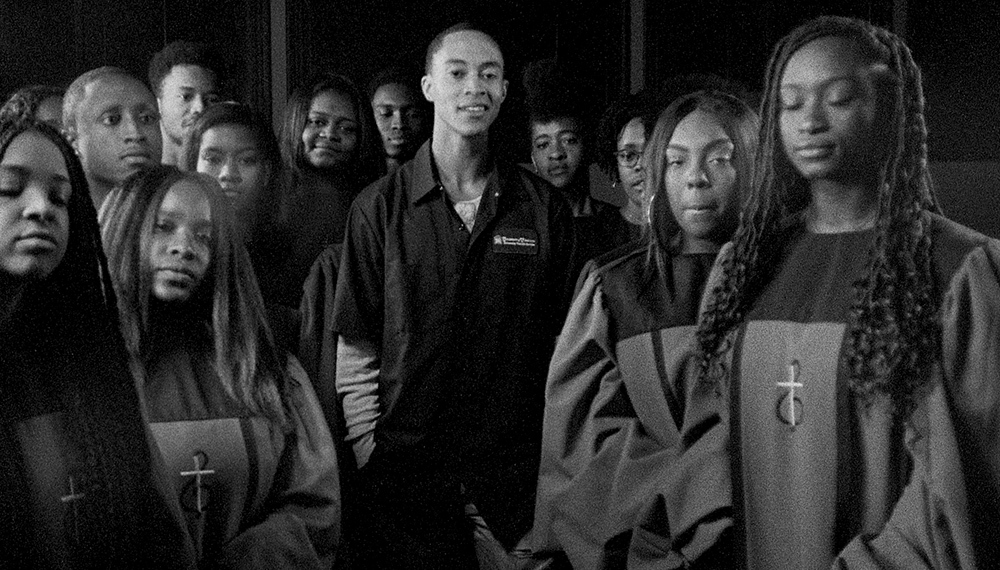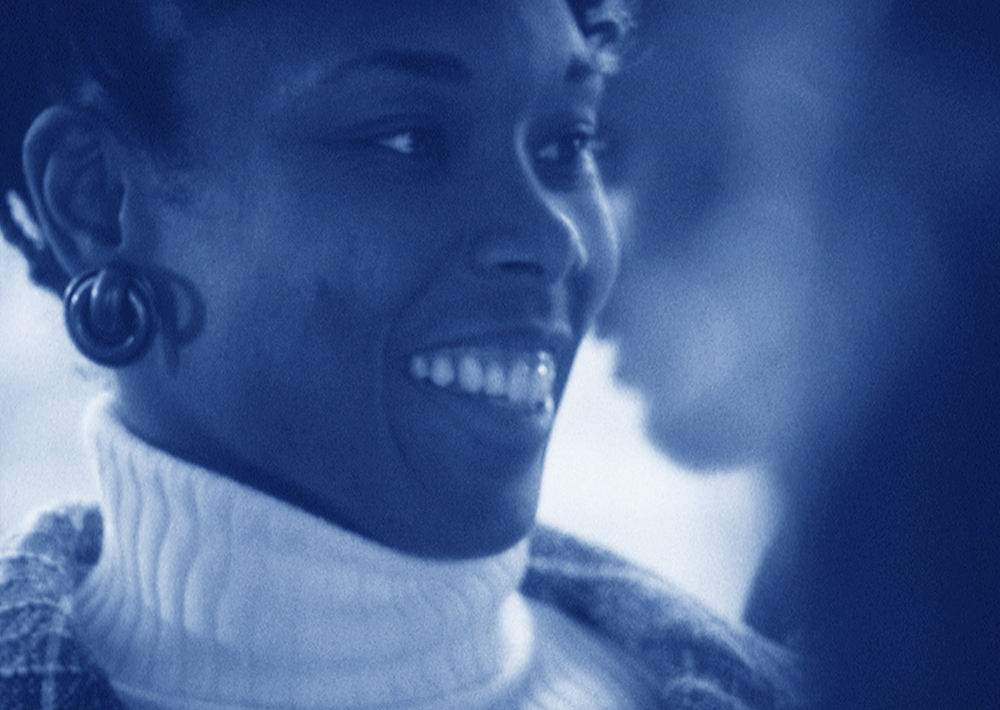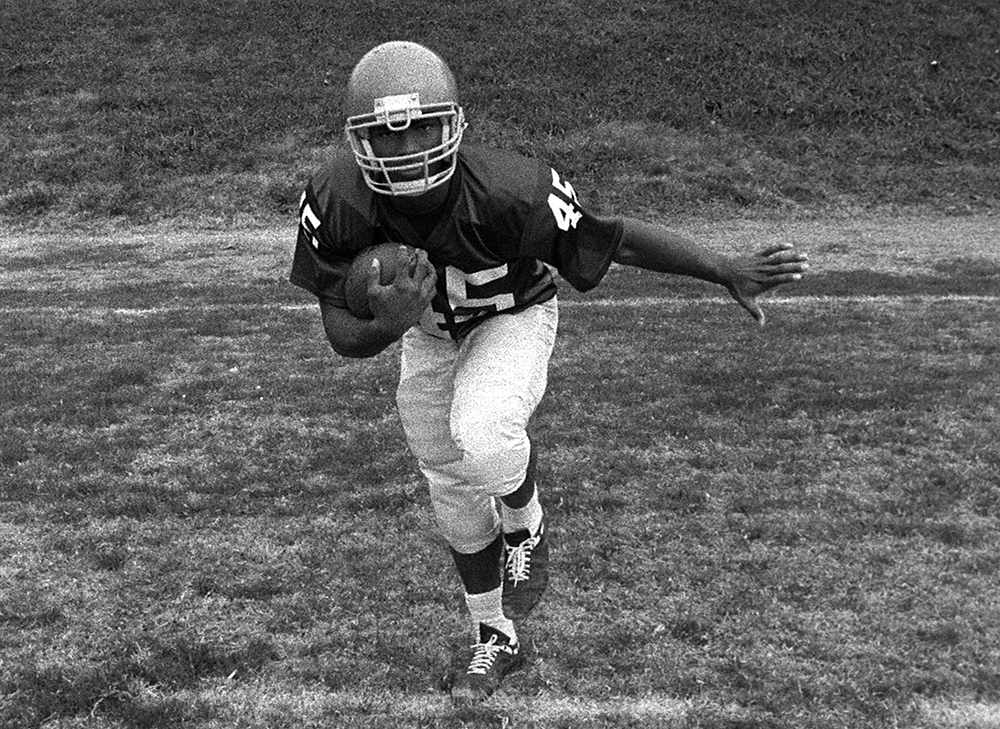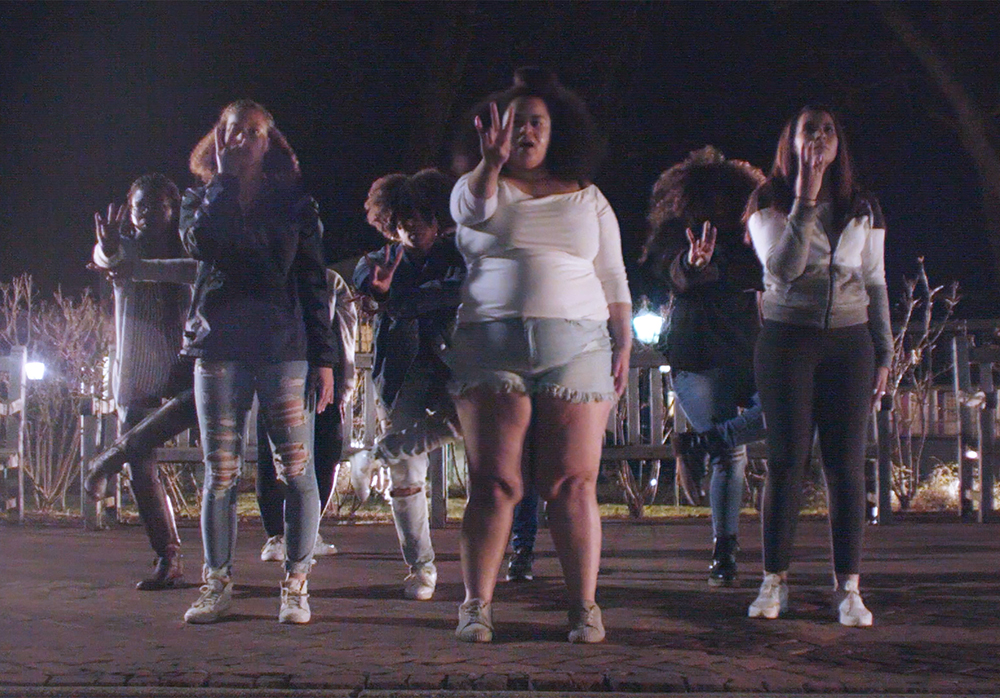Black Fire: Power in Play
Exploring Blackness
Professors and filmmakers Kevin Jerome Everson and Claudrena N. Harold talk about their Black Fire project, an ongoing exploration of Blackness, history and interiority.

Vienna Shorts’ Expedition section aims to create cinematic dialogues between aesthetics, themes, and artistic perspectives. One of the highlight Portrait programmes in the 2023 edition was Kevin Jerome Everson and Claudrena N. Harold’s Black Fire project, an ongoing exploration of Blackness, history, and interiority within the emblematic institution both filmmakers work in as professors: The University of Virginia. Talking Shorts had a chance to speak with Everson and Harold about their eclectic cinematic approach, the political undercurrent of their work, and their evolving relationship with the institution they call home.
A Black Fire was first born amidst turmoil and urgency. The 60s. The changing tides of the millennium. The dichotomy of the post-War world. Fights all around the globe happening simultaneously. Old empires crumbling and new ones rising from their ashes. The hope of something different became the guiding force behind many movements. Decolonization. Anti-Capitalism. Communal mobilization. Freedom. Civil Rights. The hectic pace of the 60s can only be understood through specificity. Any attempt at abstraction or generalization suffers from the possibility of diluting the decade’s seminal role in forging many of the pillars we pride ourselves in saying “made society better”. After all, there’s an inherent fallacy with that last assessment. The implication of a closed chapter, of an unquestionable victory that left no doubt in place. Sadly, that isn’t the reality we live in. It’s a matter of looking around and seeing plenty of work to be done. Thus, there’s hardly any redundancy in a new Black Fire sparkling creativity.
The original Black Fire refers to An Anthology of African American Writing, the source document edited by Amiri Baraka and Larry Neal that compiles many of the intellectual luminaries of the Black Arts Movement (BAM). Sun Ra. Kwame Ture. Sonia Sanchez. They’re all within its pages. Some call it BAM’s defining work. Others describe it as “a Black American Bible of sorts”. What it undoubtedly is, is a snapshot of Black thought in a given place and time. Kevin Jerome Everson and Claudrena Harold’s Black Fire shares that latter descriptor. Together, they’ve worked to explore the different nuances of the Black experiences around a historical institution like the University of Virginia, from its political history, its vibrant cultural life, and all the way to the powerful moments of leisure shared by students and workers.
Just like the Black Arts Movement of the 60s, the ongoing audiovisual project by Everson and Harold has as its basis the idea of collaboration, of breaking the hierarchies of how canonical history reads creation as an individual effort and championing the political power of collectivity. After all, beyond the artistic synchrony and complement they might find among themselves, the films part of the Black Fire project are also an open dialogue with its surroundings, including the students themselves. To this, Harold has previously mentioned a shared ethos with “the spirit of Jazz,” of improvisation and building off each other’s creative forces as an integral part of the creative process.
“We make decisions and want the films to flow in a particular way, but we also want them to be honest and the best artistic representation they could possibly be. (…) For me, it’s all about feeling. There’s a spirit I want to capture. The thing I want to capture about the college experience is that spirit. You’re trying to hit a certain note in the film. Strike a chord with the audience. There’s a soundtrack to situations, and we like to play like that.”
That way of creatively approaching their subjects makes Everson and Harold’s Black Fire project transcend any potential insularity, even when dealing with the specificity of the interior life of a population within a public institution in the United States. “I think there are universal things in human interaction, higher education, and cultural politics. It’s beautiful to see people inhabit the stories and find part of themselves that mirror their own lives and engagement with institutions in the work we do,” asserts Harold. There’s also the fact that despite being part of a broader conceptual umbrella, each film part of Black Fire boasts its own personality and feel. “The genre of short-form enables you to explore a variety of topics in depth without losing the integrity and the specificity of each story,” as Harold explains.

Sugarcoated Arsenic (2013)
Each film part of the broader Black Fire project is a reinterpretation, in a way. Like the old Jazz masters rearranged the standards and tinkered with them until they felt like their own, Everson and Harold establish vivid and open dialogues with the history that exudes from old registers and collective memory. Most shorts are constructed like a found object, usually recreating scenes of everyday life during the 1960s. They engage with the interiority of Black life, past and present, and create intimate iconography based on that. Empathetic frames and closed portraits rediscover the power exuding from the photographs and audio they use as storyboards. As Everson explains, “Most of the templates from the films come from stories that have been told or pictures that have been taken. Those are the points of departure. (…). But I kinda like how this is cinema. I come from a photographic background, where you got the blur, the frame, and then the subject. But in cinema, everything can be anything. A play, a poem, a sculpture…”
What Everson mentions also goes both ways, as showcased by the film that started the Black Fire project, Sugarcoated Arsenic (2013), which turns a historical monologue into a dynamic film bursting with warmth and life. The conceptual anchor is Vivian Gordon’s (the director of the University of Virginia’s Black Studies program during the 70s, and an important figure in Black intellectual life) speech examining political disenfranchisement, dealing with a post-integration world in a state which upheld Jim Crow laws, and the nuances of forging Black identities. The first part of the film is fully a recreation, constructed in a way that exalts 70s documentary form, but as soon as the monologue comes to its climactic conclusion, there’s a brief standby. An unassuming moment of play, where two black students enjoy each other’s challenge in a foosball match. What follows is a recollection of campus life, a self-exploration of the University of Virginia’s own Black history and identity as seen through moving portraits bringing new life to forgotten stills. The juxtaposition is clear in its aim. There are politics in leisure, a subversive element to framing black bodies without any hint of struggle.
Harold shared an anecdote regarding a time she showed her students Sugarcoated Arsenic. One of them was particularly struck by the aforementioned foosball scene, where there’s no incident beyond the match being played. They said that one of the things they loved about it was how it commanded the audience to “be silent and have to look at us”—a moment where there’s nothing to distract the gaze from a shared moment of intimacy and vitality.
That same concept is at the heart of Pride (2021) and Gospel Hill (2022). The former focuses on the looming deadline of a student-run newspaper’s issue on “Pride”. It mostly showcases the minutiae of the process itself, with the central figure being an aspiring writer finalizing her stories for publication. There’s no need for dramatic external interference when what’s being depicted carries an aura of defiance in and of itself: Black creativity, confidence, a bastion of higher education working as a platform for dissenting thought.
In Gospel Hill, two workers share a drink in a local speakeasy. Over the groovy sounds of the jukebox and the social enhancement that comes with alcohol, they lay back and immerse themselves in conversation. One of them is a phlebotomist. The other is a former technician who now works in the University’s cafeteria. The whole scene is primarily framed in close portraits, capturing not only the emotion of the active speaker as he finds tangible confidence in his counterpart but also the smiles and nods of the listener, those genuine glimpses of acknowledgment of which community and solidarity are built upon. Those expressions of vulnerability bypass the need for the kind of dramatic fixtures that, at one point in time, were associated with the representation of Blackness in cinema. For Claudrena Harold, her students’ reception of the films clearly indicates how their work resonates. “I remember the first time I showed one of Kevin’s films at my Labor History class, and my students said, “Can he do that?”. It’s working-class people at the center, and what they’re doing is the driving narrative. I don’t think they’d ever seen working-class people at the center. Not marginalized, not criminalized. Just everyday people being alive.”

Fastest Man in the State (2017)
Given the racial history of the United States of America, just existing in daily life as a Black person carries an aura of resistance. In Fastest Man in the State (2017), Kent Merrit, a promising running back who was one of the first Black scholarship athletes at the University of Virginia, recounts the highs of his collegiate sporting career. His training montage is reconstructed with impressive period detail, intercut with other reenactments of various disciplines. At first, the focus is physicality itself. Black bodies on the screen are flowing almost rhythmically. But soon, Merrit’s voice becomes one of oral history itself. Even as a stand-out performer wearing the school’s logo, even in his moments of accomplishment crashing into the end zone, he was reminded of the inherent tension of his role by the waving of celebratory Confederate flags.
In most forms of conventional non-fiction, this harrowing revelation would be played up for pathos in some way, but in Fastest Man in the State, it’s juxtaposed with footage of training drills. Harold and Everson know significance is already there on the screen; it manifests without the need for underlining or revisionism. Their political expression comes on their own terms. “I think what’s important is defining what constitutes the political. Our rendering of the political is not imposed by any external force but by our own kind of warped imagination and ideas. This is what we think is important. Part of the work is trying to redefine and expand the boundaries of the political,” is how Harold puts it.
Despite their imaginative recontextualization of documentary forms, the films part of the Black Fire project are more than comfortable embracing the cinematic artifice to get across the intangible ethos of what’s being depicted—the jazz spirit mentioned by Harold. The cinematic magic is alluded to by Everson. The whole project seems to manifest in a fabulistic manner, guided by a sense of musicality that goes beyond the aural. It’s about the flow of things and how they interconnect. We Demand (2016) is a clear example of that. A film conceived to “feel like Bob Dylan’s masterpiece,” in the words of its authors. Or How Can I Ever Be Late (2017), where the subject of Sly & The Family Stone inspires a sense of dissonance throughout the film. These two works are both expansions of what, on the other hand, would simply be footnotes on the University of Virginia’s rich history, but within Black Fire, James Roebuck’s (the University’s Student Council’s first Black president) militant role in the anti-Vietnam war movement and the greeting of enthusiastic students at the airport arrival of one of the most incendiary funk acts ever are both integral fragments of Black experiences. Both valid expressions of dissent are showcased in a lyrical manner that understands that in order to make history palpable, the most essential part is making it feel present.
Everson describes the formal fluidity of the Black Fire films as part of an aesthetic exploration that “always depends on the original point of departure.” Going back to the initial mention of collaboration, each film’s first priority is working within the realm of what’s already available. Making it feel “three-dimensional, like there’s a sense of space,” in Everson’s words. As seen throughout the project, that space is not necessarily naturalistic but evokes something lively — a cinematic celebration of sorts.

Black Bus Stop (2019)
Hampton (2019) and Black Bus Stop (2019) are perhaps the most glaring embodiments of the latter idea. Everson describes both films as “magical realist explorations of black song and dance.” The first is a gospel music performance that sees right through the spectator’s eyes and into their soul. The whole choir barely fits within the frame, which mirrors how the power of their interpretation seems to transcend what the camera is aiming to capture. Portrait shots of some of the singers are at times seen only in glimpses, as light erratically passes by. Their features aren’t always in focus, feeling like an impressionistic rendering that perfectly complements the otherworldly music. Black Bus Stop is perhaps more cryptic to the uninitiated; a live dialogue between the ritualistic leanings of Greek fraternities and sororities, recontextualized and fused with the autochthonous traditions of Black dance. The bus stop transforms into a cultural meeting point, but it always was: the most communal of spaces, the passive listener to the most legendary of meetings, and the most personal of exchanges. Throughout time jumps and the constant buzz of the engine soundscapes, bodies never stop crossing by, molding a new meaning through their mere motions.
When seen together, the films of the Black Fire project create a multi-layered and multi-dimensional depiction of the University of Virginia’s campus, a localized geography mapped through heterogeneous expressions of the wide range of Black interior experiences—from the 60s to the modern day, from the confrontational to the celebratory, from the blatantly political to the subtle moments of solace. As Kevin Jerome Everson puts it, when it comes to “people talking about work and leisure. You never come too far from it.”
